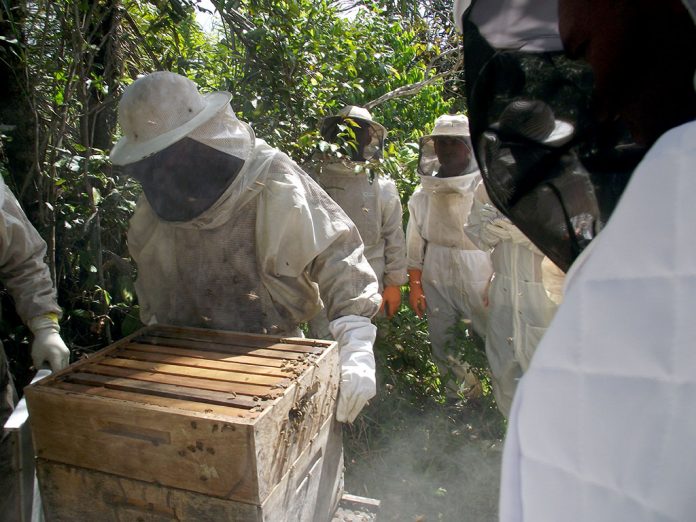Brazilian apiculture officially started in 1839, when Father Antonio Carneiro imported 100 bee colonies of the Apis mellifera species from Oporto (Portugal). After crossing the Atlantic, only seven colonies survived and were installed on Formosa beach, in Rio de Janeiro.
Between 1845 and 1880, German and Italian immigrants introduced other subspecies of the Apis mellifera in locations in the South and Southeast of the country.
During this phase, honeybees were mainly exploited as a hobby and for the production of wax. As a result, Brazilian apiculture was fairly rudimentary, with few management techniques and hives kept in backyards, as bees presented low aggressiveness and did not create problems with other livestock.
Introduction of African bees
By the 1950s, honey production by European honeybees was low, not exceeding 8,000 tons per year, and a simple 27th position in world production, as these bees were not adapted to tropical conditions. Also loads of hives were decimated due to diseases, such as acariasis and nosemosis.
To turn this situation around, in 1956, Professor Warwick Estevan Kerr set off for Africa in search of new queen bees. The trip, which had the support of the Ministry of Agriculture, resulted in the arrival of 49 queens that were installed in the experimental apiary of Rio Claro in the state of São Paulo.
The aim of the project was to conduct studies comparing the African bees with their European counterparts, assessing productivity and resistance to define the most appropriate species to Brazilian conditions.
However, due to management errors, bees from 26 hives were accidentally released, which culminated in the cross-breeding of African and European bees, giving rise to the Africanized bee. During this Africanization period, the country went through a troubled phase that was very exploited by media sensationalism, which treated them as “killer bees” due to the many accidents that occurred.
From saviors of our apiculture, they became pests that needed to be exterminated. Drastic solutions, such as spraying insecticides in large areas, were evaluated. Given this chaotic scenario of low honey production, lack of management and several accidents, many beekeepers abandoned the activity.
Over time, the remaining beekeepers started adapting the management techniques used with the European bees to the Africanized bees, much more aggressive, but also more productive and more resistant to diseases.
Recovery and expansion
Greater exchange of techniques and experiences, with the holding of symposia and conferences bringing together producers and researchers, decisively contributed to the establishment of apiculture as an important sector of agricultural and livestock production.
As a landmark of this recovery, the Brazilian Confederation of Apiculture was founded in 1967 and three years later the first Brazilian congress in the area was held.
In 2009, Brazil managed to hold the fourth position in the rank of largest honey exporters. In the following years, due to the drought in some regions, honey production dropped, and in 2012 the country held the tenth position.
Despite the difficulties, the prognoses for the activity are extremely positive, as few countries in the world gather such favorable environmental and climatic conditions for honey production and other derivatives.




